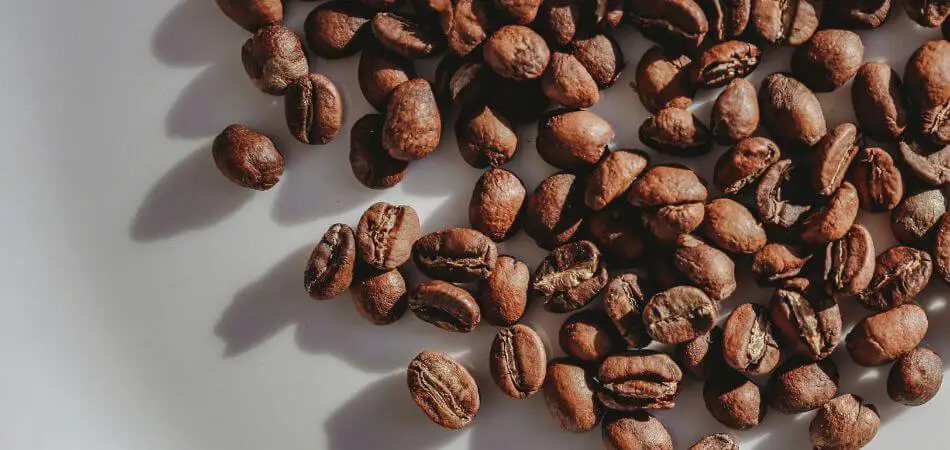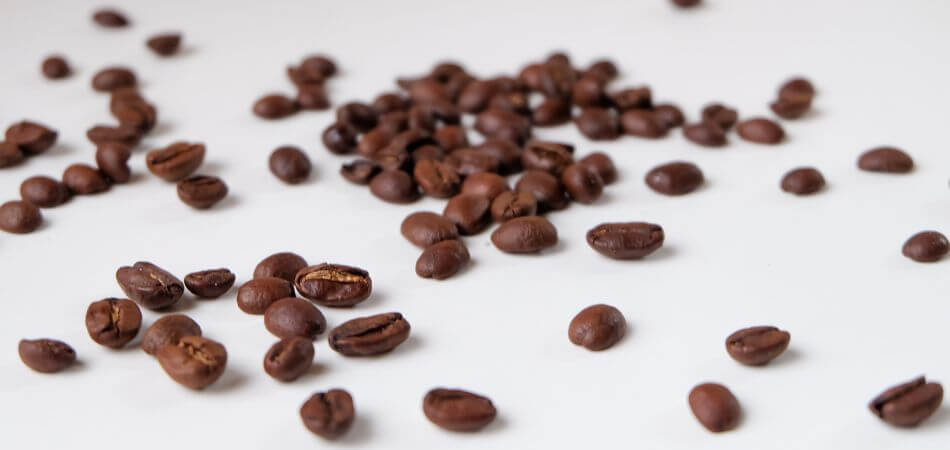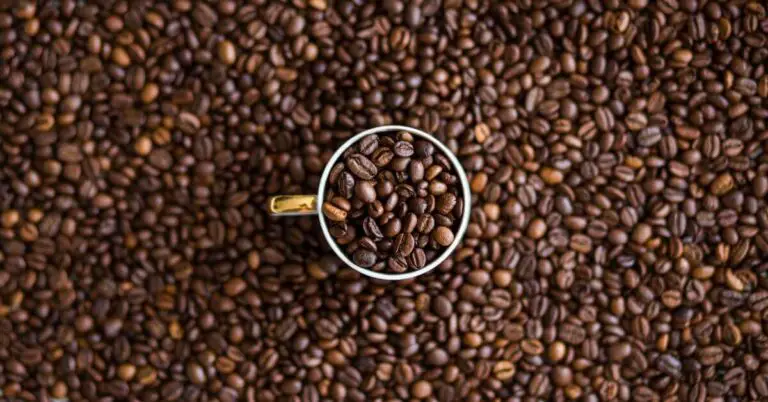A Guide to Different Types of Coffee Beans
Have you ever stood in front of the coffee aisle, overwhelmed by the countless options of beans and blends? You’re not alone. With over 400 billion cups of coffee consumed worldwide each year, the humble coffee bean has become a global phenomenon. But here’s the kicker: not all coffee beans are created equal. 🌟
From the bold and intense Robusta to the smooth and aromatic Arabica, each type of coffee bean offers a unique flavor profile that can transform your morning brew. But how do you navigate this complex world of coffee? What factors influence the taste, and how can you choose the perfect bean for your palate? Don’t worry, we’ve got you covered. In this guide, we’ll explore the fascinating world of coffee beans, uncovering the secrets behind their flavors, origins, and grades. Get ready to embark on a caffeinated journey that will elevate your coffee experience from ordinary to extraordinary. ☕️
Popular Coffee Bean Varieties
Now that we’ve introduced the topic of coffee beans, let’s dive into the most popular varieties that dominate the global coffee market. Understanding these different types will help you make informed choices about your coffee preferences.
A. Arabica: The Smooth and Aromatic Choice
Arabica coffee beans are widely regarded as the cream of the crop in the coffee world. Known for their smooth, complex flavors and aromatic qualities, Arabica beans account for about 60-70% of global coffee production. These beans thrive in high-altitude regions with steady rainfall and ample shade.
Characteristics of Arabica:
- Flavor profile: Sweet and soft with notes of sugar, fruit, and berries
- Acidity: Higher than Robusta, contributing to a bright and winey taste
- Caffeine content: Lower, typically 1.2-1.5%
B. Robusta: Bold Flavor and Higher Caffeine
Robusta coffee beans are the second most popular variety, prized for their strong, full-bodied flavor and higher caffeine content. These beans are more resilient than Arabica, growing at lower altitudes and being more resistant to pests and diseases.
Characteristics of Robusta:
- Flavor profile: Strong and often described as harsh or rubbery
- Acidity: Lower than Arabica
- Caffeine content: Higher, typically 2.2-2.7%
C. Liberica: Rare and Distinctive
Liberica coffee beans are a rare treat, accounting for only a small percentage of global coffee production. Native to Liberia in West Africa, these beans are known for their unique flavor profile and larger, irregularly shaped beans.
Characteristics of Liberica:
- Flavor profile: Full-bodied with a smoky, woody aroma and a slightly fruity taste
- Acidity: Lower than Arabica
- Availability: Limited, mainly found in Southeast Asian countries
D. Excelsa: Unique Tart and Fruity Notes
Excelsa, sometimes classified as a variety of Liberica, is another rare coffee bean type. It offers a truly unique tasting experience, combining characteristics of both light and dark roast coffees.
Characteristics of Excelsa:
- Flavor profile: Tart and fruity with a distinctive aroma
- Complexity: High, with a lingering finish on the palate
- Availability: Limited, often used in blends to add complexity
To help you compare these coffee bean varieties at a glance, here’s a handy table:
| Variety | Flavor Profile | Caffeine Content | Acidity | Global Production |
|---|---|---|---|---|
| Arabica | Smooth, sweet | Lower (1.2-1.5%) | Higher | 60-70% |
| Robusta | Bold, strong | Higher (2.2-2.7%) | Lower | 30-40% |
| Liberica | Woody, fruity | Moderate | Lower | <1% |
| Excelsa | Tart, complex | Moderate | Moderate | <1% |
Understanding these different coffee bean varieties can enhance your appreciation for the diverse world of coffee. In the next section, we’ll explore the various factors that influence the flavor profiles of these beans, helping you further refine your coffee preferences.

Factors Affecting Coffee Bean Flavor
Now that we’ve explored popular coffee bean varieties, let’s delve into the factors that significantly influence the flavor profile of coffee beans. Understanding these elements will help you appreciate the complexity of your favorite brew and make more informed choices when selecting coffee.
Growing Regions and Climate
The geographical location and climate where coffee beans are grown play a crucial role in determining their flavor. Different regions impart unique characteristics to the beans:
- Equatorial regions: Often produce beans with bright acidity and fruity notes
- Subtropical areas: Tend to yield beans with nutty and chocolatey flavors
- High-altitude regions: Generally result in beans with complex flavors and higher acidity
| Region | Typical Flavor Profile |
|---|---|
| Central America | Bright, clean, with citrus notes |
| South America | Nutty, chocolatey, with mild acidity |
| Africa | Fruity, floral, with wine-like acidity |
| Asia | Earthy, spicy, with full body |
Altitude and Soil Composition
The elevation at which coffee is grown and the soil composition significantly affect the bean’s flavor:
- Higher altitudes: Generally produce denser, more complex beans with higher acidity
- Lower altitudes: Often result in softer, less acidic beans
- Volcanic soil: Imparts mineral notes and contributes to a fuller body
- Sandy soil: Can lead to lighter-bodied coffee with subtle flavors
Harvesting Methods
The way coffee cherries are harvested impacts the final flavor of the beans:
- Selective picking: Ensures only ripe cherries are harvested, resulting in more uniform flavor
- Strip picking: Harvests all cherries at once, potentially leading to more variable flavors
- Machine harvesting: Can be less selective, potentially affecting overall quality
Processing Techniques
After harvesting, the method used to process coffee cherries significantly influences the bean’s flavor:
- Washed process: Produces clean, bright flavors with higher acidity
- Natural process: Results in fuller body, fruitier flavors, and lower acidity
- Honey process: Strikes a balance between washed and natural, offering complex sweetness
Roasting Levels
Finally, the roasting process is crucial in developing the coffee’s final flavor profile:
- Light roast: Preserves origin flavors, higher acidity, floral and fruity notes
- Medium roast: Balanced flavor, some origin characteristics, increased sweetness
- Dark roast: Bold, rich flavors, lower acidity, pronounced bitterness
| Roast Level | Flavor Characteristics |
|---|---|
| Light | Bright, acidic, origin-specific |
| Medium | Balanced, sweet, slightly nutty |
| Dark | Bold, bitter, smoky |
Understanding these factors allows coffee enthusiasts to explore the vast world of flavors that coffee beans offer. By considering the growing region, altitude, harvesting method, processing technique, and roasting level, you can better predict and appreciate the unique characteristics of different coffee beans. Next, we’ll examine how these factors contribute to the grading system used for coffee beans.

Understanding Coffee Bean Grades
Now that we’ve explored the factors that influence coffee bean flavor, let’s delve into the world of coffee bean grades. Understanding these grades is crucial for coffee enthusiasts and professionals alike, as they provide valuable insights into the quality and characteristics of different beans.
A. Premium Grade Beans
Premium grade beans represent the pinnacle of coffee quality. These beans are meticulously selected and processed to ensure the highest standards of flavor, aroma, and overall sensory experience. Here are some key characteristics of premium grade beans:
- Minimal defects (less than 5 per 300 grams)
- Uniform size and color
- Distinctive flavor profiles
- Harvested at peak ripeness
Premium grade beans often come from single-origin sources and are favored by specialty coffee shops and connoisseurs. They command higher prices due to their superior quality and limited availability.
B. Specialty Grade Beans
Specialty grade beans are a step below premium but still offer exceptional quality. These beans are carefully graded and meet strict standards set by organizations like the Specialty Coffee Association (SCA). Key features include:
- No primary defects and limited secondary defects
- Consistent size and color
- Complex flavor notes
- Scored 80 or above on a 100-point scale
Specialty grade beans are popular among third-wave coffee shops and discerning home brewers. They offer a balance between quality and accessibility, making them a favorite for those seeking an elevated coffee experience.
C. Commercial Grade Beans
Commercial grade beans are the most common type found in supermarkets and many chain coffee shops. While they may not reach the heights of premium or specialty grades, they still offer consistent quality for everyday consumption. Characteristics of commercial grade beans include:
- Allowance for more defects (up to 20 per 300 grams)
- Less stringent size and color uniformity
- Simpler flavor profiles
- Lower price point
To better understand the differences between these grades, let’s compare them in a table:
| Characteristic | Premium Grade | Specialty Grade | Commercial Grade |
|---|---|---|---|
| Defects | < 5 per 300g | < 10 per 300g | < 20 per 300g |
| Flavor Profile | Complex, Distinctive | Complex, Balanced | Simple, Consistent |
| Price Point | High | Medium-High | Low-Medium |
| Availability | Limited | Moderate | Widely Available |
| Typical Use | High-end Cafes, Connoisseurs | Specialty Coffee Shops | Supermarkets, Chain Cafes |
Understanding these coffee bean grades empowers consumers to make informed choices based on their preferences and budget. Whether you’re a casual coffee drinker or a dedicated aficionado, knowing the differences between premium, specialty, and commercial grade beans can enhance your appreciation and enjoyment of this beloved beverage.

Exploring Coffee Bean Origins
Now that we’ve covered the various factors that influence coffee bean flavor, let’s embark on a journey around the world to explore the diverse origins of coffee beans. Each region imparts unique characteristics to its beans, creating a rich tapestry of flavors for coffee enthusiasts to savor.
A. South American Beans
South America is renowned for producing some of the world’s most beloved coffee beans. Brazil and Colombia lead the charge, with their beans often serving as the backbone of many popular blends.
- Brazilian beans: Known for their nutty, chocolate-like flavor with low acidity
- Colombian beans: Prized for their well-balanced profile with medium acidity and body
Other notable South American coffee-producing countries include Peru, Ecuador, and Venezuela, each offering distinct flavor profiles that reflect their unique terroir.
B. African Beans
African coffee beans are celebrated for their complex, often fruity flavors and bright acidity. The continent’s diverse growing regions contribute to a wide array of taste experiences.
| Country | Flavor Profile |
|---|---|
| Ethiopia | Floral, fruity notes with wine-like acidity |
| Kenya | Bold, bright flavors with a wine-like acidity |
| Tanzania | Rich, full-bodied with notes of black currant |
Uganda and Rwanda are also emerging as producers of high-quality coffee beans, each contributing unique characteristics to the African coffee landscape.
C. Asian Beans
Asian coffee beans offer a spectrum of flavors, from the earthy and bold to the smooth and subtle. Indonesia, in particular, is famous for its distinctive coffee varieties.
- Sumatra: Full-bodied with earthy, herbal notes
- Java: Clean, bright taste with a light body
- Sulawesi: Smooth, sweet flavor with low acidity
Vietnam, the world’s second-largest coffee producer, is known for its robusta beans, which are often used in espresso blends and instant coffee.
D. Central American Beans
Central American coffee beans are prized for their well-balanced flavors, often featuring a perfect harmony of acidity and body. These beans are a favorite among specialty coffee roasters.
| Country | Characteristics |
|---|---|
| Guatemala | Complex, spicy flavor with chocolatey undertones |
| Costa Rica | Bright acidity with hints of citrus and chocolate |
| Honduras | Mild, sweet flavor with notes of nuts and caramel |
Panama’s Geisha coffee, grown in the Boquete region, has gained international acclaim for its delicate floral and tea-like qualities, often fetching premium prices at auctions.
As we delve into the world of coffee bean origins, it becomes clear that each region contributes its own unique flavors and characteristics to the global coffee scene. This diversity allows coffee lovers to explore a wide range of taste experiences, from the bright and fruity notes of African beans to the rich, earthy flavors of Indonesian varieties. With this knowledge of coffee bean origins, you’re now better equipped to choose the right coffee bean for your taste preferences.

Choosing the Right Coffee Bean for Your Taste
Now that we’ve explored various aspects of coffee beans, let’s focus on how to select the perfect bean for your palate. The key to a satisfying cup of coffee lies in understanding your preferences and matching them with the right bean.
Identifying Your Preferred Flavor Profile
Your taste preferences play a crucial role in selecting the ideal coffee bean. Consider the following flavor profiles:
- Fruity and Bright: Typically found in light roasts from African regions
- Chocolatey and Nutty: Often associated with medium roasts from South American beans
- Bold and Earthy: Common in dark roasts from Indonesian origins
To help you navigate these flavor profiles, here’s a quick reference table:
| Flavor Profile | Roast Level | Common Origins | Tasting Notes |
|---|---|---|---|
| Fruity & Bright | Light | Ethiopia, Kenya | Citrus, berries, floral |
| Chocolatey & Nutty | Medium | Colombia, Brazil | Cocoa, almonds, caramel |
| Bold & Earthy | Dark | Sumatra, Java | Spices, tobacco, wood |
Considering Caffeine Content
Caffeine sensitivity varies from person to person. If you’re looking for a strong caffeine kick, opt for:
- Light roasts (contrary to popular belief, they contain more caffeine)
- Robusta beans (higher caffeine content than Arabica)
For those seeking a milder caffeine experience, consider:
- Dark roasts
- Arabica beans
- Decaf options (which still retain most of the coffee’s flavor)
Matching Beans to Brewing Methods
Different brewing methods extract flavors differently, so pairing your beans with the right method is essential:
- French Press: Medium to dark roasts work well, as they complement the full-bodied result
- Espresso: Medium-dark to dark roasts are ideal for their low acidity and rich flavor
- Pour-over: Light to medium roasts shine in this method, highlighting delicate flavor notes
- Cold Brew: Medium to dark roasts are preferred for their smooth, less acidic profile
Experimenting with Blends
Don’t be afraid to venture beyond single-origin beans. Blends offer a unique opportunity to experience complex flavor profiles:
- Breakfast Blends: Usually light to medium roasts, offering a balanced and smooth start to your day
- Espresso Blends: Typically darker roasts, designed to produce a rich crema and bold flavor
- House Blends: Often a signature mix created by roasters to showcase their expertise
Remember, the journey to finding your perfect coffee bean is a delightful exploration. Don’t hesitate to try different varieties, origins, and roasts. Keep a coffee journal to note your preferences and discoveries. With time, you’ll develop a refined palate and a deeper appreciation for the diverse world of coffee beans.
Conclusion
Coffee beans come in a diverse array of varieties, each with its unique flavor profile and characteristics. From popular options like Arabica and Robusta to lesser-known varieties such as Liberica and Excelsa, the world of coffee offers something for every palate. Factors like growing conditions, processing methods, and roasting techniques all play crucial roles in shaping the final taste of your brew.
Understanding coffee bean grades and origins can help you make informed choices when selecting your perfect cup. Whether you prefer the bright acidity of Ethiopian beans or the full-bodied richness of Colombian coffee, exploring different varieties and origins can lead to a more fulfilling coffee experience. By considering your personal taste preferences and experimenting with various types of coffee beans, you can discover new flavors and find the perfect brew to start your day.
Frequently Asked Questions On Types Of Coffee Beans
Q1# What Are The Different Types Of Coffee Beans?
Coffee beans come in various types, including Arabica, Robusta, Liberica, and Excelsa, each with its distinct characteristics.
Q2# Which Coffee Bean Has The Highest Caffeine Content?
Robusta coffee beans have a higher caffeine content compared to Arabica beans, making them a popular choice for those seeking a stronger coffee kick.
Q3# What Is The Difference Between Arabica And Robusta Coffee Beans?
Arabica beans are known for their smoother taste and higher acidity, while Robusta beans have a stronger, more bitter flavor with higher caffeine content.
Q4# Where Are The Best Coffee Beans Grown?
The best coffee beans are often produced in regions with optimal growing conditions, such as Colombia, Ethiopia, Brazil, and Costa Rica.






